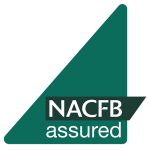By Matthew Dilks, bridging and commercial specialist, Clever Lending
The need for bridging loans is growing rapidly, and far ahead of its usual trajectory. In fact, while Bridging Trends recently reported that bridging transactions jumped 68% between Q4 2022 and Q1 2023 to £278m, a perhaps more telling fact is that Knowledge Bank named ‘regulated bridging’ as the most popular criteria search term in the first quarter of this year.
The difference between regulated and unregulated bridging doesn’t just come down to the obvious point of the lending being authorised by the Financial Conduct Authority (FCA) or not (although this is a major part of it). It also relies on the purpose of a bridging loan – whereas unregulated loans can be secured against many different types of property or land, regulated loans must be used for a property either already belonging to the borrower (or their family) or on a property they plan to occupy in future.
Regulated bridging loans are increasing in relevance for the broader residential market, for many reasons, but a large one regards chain breaks. The current interest rate turmoil has seen close to 1,000 mortgage products disappear in the last few weeks, as well raising rates for those products that do survive, and the house price to average earnings ratio is now 8.8 – double that of the 70s.
A hopeful buyer staring down the barrel of a property chain was an unenviable situation during calmer times. Today, with mortgage products disappearing within 24 hours and loans suddenly being out of reach for many, the prospect of relying on a property chain is a nerve-wracking prospect.
Regulated bridging loan
A regulated bridging loan is the perfect solution to this problem for many would-be buyers. Such a short-term loan can be organised and extended within days, securing the property, with the interest rolled-up and paid for in a lump sum at the end of the term. And if things move more quickly than expected, the borrower only has to pay for the months they had the loan for, meaning an early repayment saves money.
Regulated bridging loans have many other uses, too. One recent example that springs to mind is a case we dealt with where somebody who, wishing to downsize, had to pull out of their first intended purchase due to dry rot, were then gazumped on their second property choice, then after finding a third property, went back to the second after the gazumper pulled out of their own deal. We managed to secure a loan of just over £300,000 with Greenfield Mortgages, made against the client’s existing property, then valued at £700,000. The loan was paid back from the sale of said property.
Another case from this year concerns a client who wished to purchase and renovate a farmhouse. Because the client planned to live in the property, we helped organise a £1.1m regulated bridging loan over 12 months through MT Finance. This loan was secured across both the client’s existing property and the farmhouse, with the eventual sale of the existing property funding this.
Both the mortgage market itself and clients’ needs are becoming more complicated and more fluid. There is no reason to believe this trend will reverse. Regulated bridging is a potent tool for managing uneasy situations, and the great news is that busy brokers battling on the front lines don’t need to spend time familiarising themselves with all the details. As a Master Broker, clients can be referred to us so they can take full advantage of our long experience in the bridging sector and our deep relationship with lenders.
In doing so, brokers will be paid a referral fee for finding the client and in the case of any repeat business the client transacts with us.
This is one of those rate situations where everybody benefits – the lender, all of the brokers involved and – more importantly, the client. There has never been a better time to jump into the regulated bridging sector.


